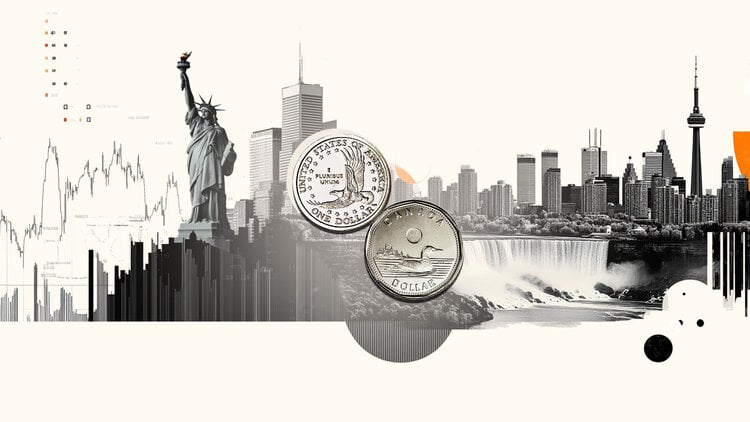- The Euro continues to fall against the US Dollar.
- Stock markets in Europe start the day on the defensive.
- EUR/USD loses ground and hits lows again around 1.0570.
- The DXY Dollar Index reaches new yearly highs above 106.00.
- Consumer confidence in the US will star in the American session.
The bearish sentiment surrounding the Euro (EUR) against the US Dollar (USD) gains more strength and pushes EUR/USD to new lows around 1.0570 on Tuesday.
On the other hand, the Dollar advances for the third consecutive session and reaches new 2023 highs at levels last seen in late November 2022, with the DXY Dollar Index surpassing the 106.00 barrier.
The sharp decline in the pair comes amid the intense recovery in US yields across different tenors, while the German 10-year bBund yield is trading at twelve-year highs above 2.80%.
If we look at the macroeconomic scenario, the strong upward momentum of the Dollar continues to be underpinned by expectations that the US Federal Reserve (Fed) will keep interest rates higher for longer. This stance was especially exacerbated at the central bank’s last meeting, held on September 20.
As for the European Central Bank (ECB), the last members of the board of directors agreed on a possible pause in the hike cycle, despite the fact that inflation far exceeds the set objective.
On the US agenda, the Conference Board’s consumer confidence indicator will take center stage, along with new home sales, the FHFA Home Price Index and a speech by FOMC permanent voter Michelle Bowman.
Daily market summary: Euro remains under strong pressure
- The Euro extends its fall against the Dollar.
- US and German yields are cruising in the zone of multi-year highs.
- Markets expect the Fed to raise rates by 25 basis points before the end of 2023.
- Investors see possible interest rate cuts by the Fed in the third quarter of 2024.
- Talk of an ECB pause continues to grow.
- Intervention fears surround the price action around USD/JPY.
Technical Analysis: The Euro is at risk of falling to 1.0516
The selling pressure around the EUR/USD continues unabated for another session, leaving the door wide open to a new pullback on the short-term horizon.
On the downside, EUR/USD faces immediate support at the March 15 low of 1.0516, followed by the 2023 low of 1.0481 seen on January 6.
As for possible resistance levels, the September 12 high at 1.0767 is a minor hurdle, followed by the 200-day SMA at 1.0828. A break above this level could open the way for further recovery, with the 55-day SMA targeting 1.0890, with the possibility of reaching the August 30 high at 1.0945. Breaking this level could shift attention towards the psychological level of 1.1000, prior to the August 10 high at 1.1064. Further ahead, the pair could retest the July 27 high at 1.1149 and potentially reach the 2023 high at 1.1275 seen on July 18.
As long as EUR/USD remains below the 200-day SMA, there is a chance for bearish pressure to persist.
Frequently asked questions about the Euro
What is the Euro?
The Euro is the currency of the 20 countries of the European Union that belong to the euro zone. It is the second most traded currency in the world, behind the US dollar. In 2022, it accounted for 31% of all foreign exchange transactions, with an average daily volume of more than $2.2 trillion per day.
EUR/USD is the most traded currency pair in the world, accounting for an estimated 30% of all transactions, followed by EUR/JPY (4%), EUR/GBP (3%) and EUR/AUD (2% ).
What is the ECB and how does it influence the Euro?
The European Central Bank (ECB), headquartered in Frankfurt, Germany, is the reserve bank of the euro zone. The ECB sets interest rates and manages monetary policy.
The ECB’s main mandate is to maintain price stability, which means controlling inflation or stimulating growth. Its main instrument is to raise or lower interest rates. Relatively high interest rates – or the expectation of higher rates – tend to benefit the Euro and vice versa.
The Governing Council of the ECB takes monetary policy decisions at meetings held eight times a year. Decisions are made by the heads of the eurozone’s national banks and six permanent members, including ECB President Christine Lagarde.
How do inflation data influence the value of the Euro?
Eurozone inflation data, measured by the Harmonized Index of Consumer Prices (HICP), are important econometric data for the euro. If inflation rises more than expected, especially if it exceeds the 2% target set by the ECB, it is forced to raise interest rates to bring it back under control.
Relatively high interest rates compared to their peers tend to benefit the Euro, as it makes the region more attractive as a place for global investors to park their money.
How do economic data influence the value of the Euro?
Data releases measure the health of the economy and can influence the Euro. Indicators such as GDP, manufacturing and services PMIs, employment and consumer sentiment surveys can influence the direction of the single currency.
A strong economy is good for the Euro. Not only does it attract more foreign investment, but it may encourage the ECB to raise interest rates, which will directly strengthen the Euro. Conversely, if economic data is weak, the Euro is likely to fall.
The economic data for the four largest economies in the eurozone (Germany, France, Italy and Spain) are especially significant, as they represent 75% of the eurozone economy.
How does the trade balance affect the Euro?
Another important release for the euro is the trade balance. This indicator measures the difference between what a country earns from its exports and what it spends on imports during a given period.
If a country produces highly sought-after export products, its currency will appreciate due to the additional demand created by foreign buyers wishing to purchase these goods. Therefore, a positive net trade balance strengthens a currency and vice versa for a negative balance.
Source: Fx Street
I am Joshua Winder, a senior-level journalist and editor at World Stock Market. I specialize in covering news related to the stock market and economic trends. With more than 8 years of experience in this field, I have become an expert in financial reporting.







